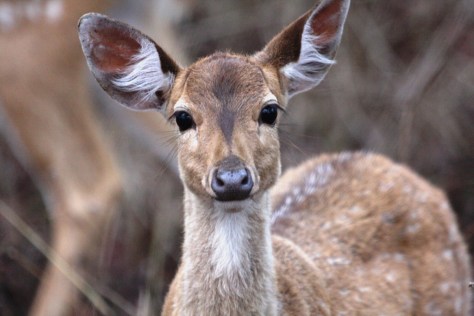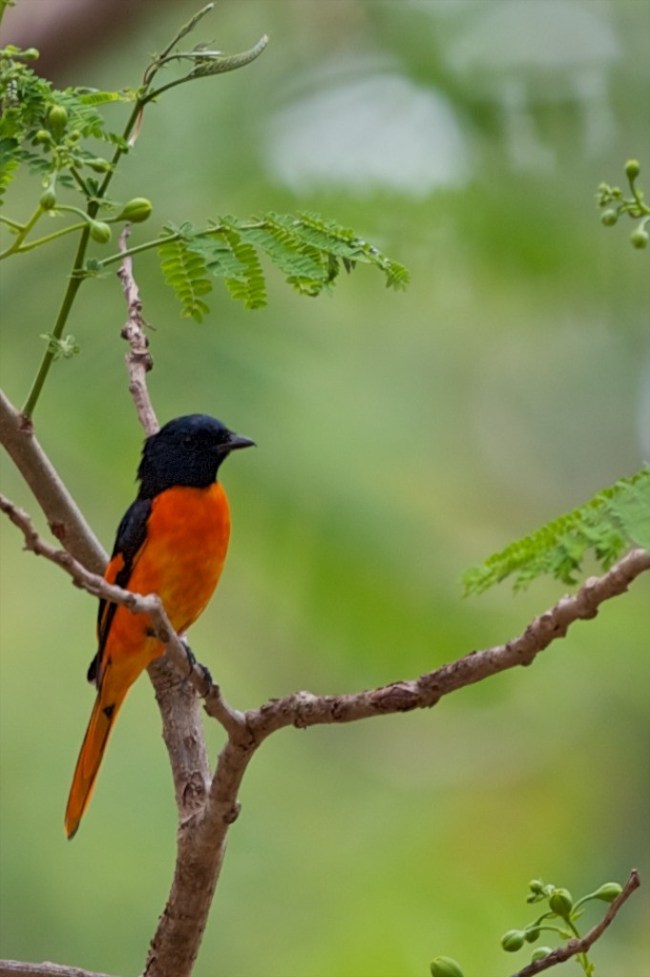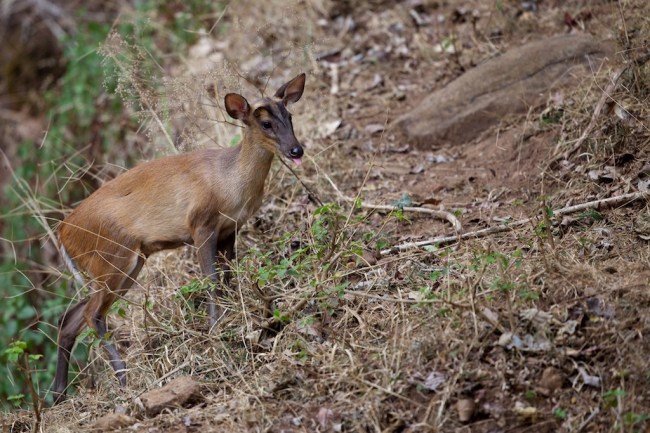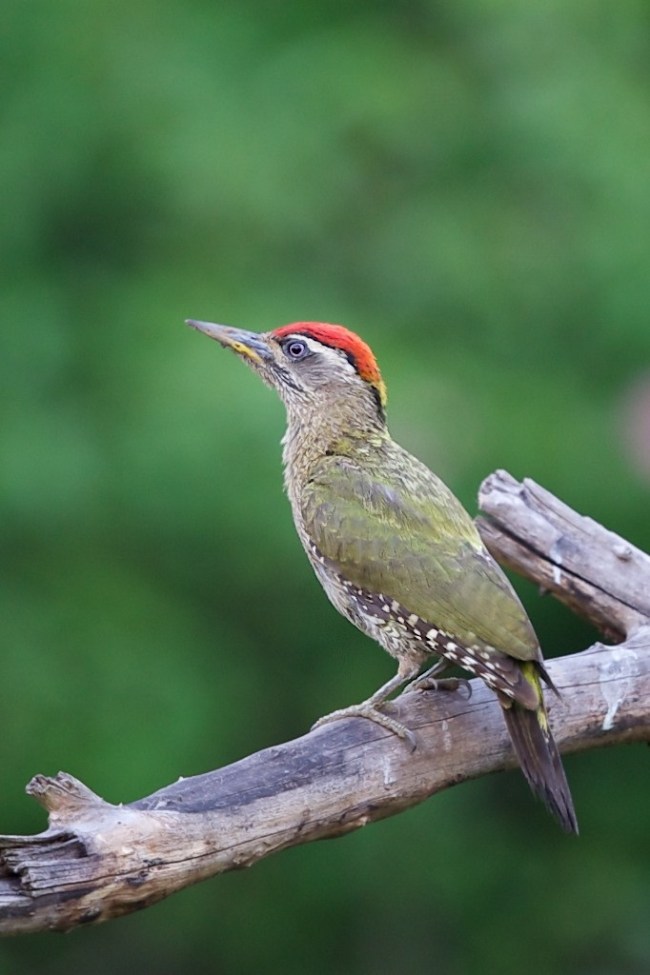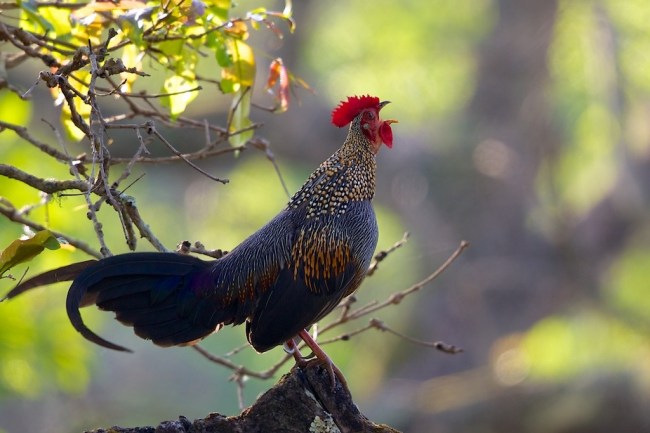Trip Report: Bandipur National Park
Dates: 14-17 Apr 2016
Camp: JLR Bandipur Safari Lodge
Who: Junior
The best trips are often the least planned ones. I got back from work on a Wednesday evening, checked JLR’s availability for K. Gudi for the next day, found it full, checked Bandipur next, found it available, and booked junior and myself for two nights. Given the quality of the sightings, we extended by another day and ended up returning to Bengaluru on Sunday.
Bengaluru was sweltering, allegedly having touched record highs of 41 and 42 degrees Celsius. Bandipur Safari lodge was cool enough because of the shade and the constant breeze, though it was warmish indoors. The safaris were also cool enough to be comfortable.
The Anogeissus latifolia trees were bare in some tracts and leaved in others, while Terminalia tomentosa were leaved throughout. Cassia fistula was in bloom, although reaching the terminus of its season – it must have been a truly awe-inspiring sight a couple of weeks back. The Gulmohar trees (outside the forest) were in riotous and spectacular bloom though. The lantana was dry and bare, though massed in thickets everywhere off the track.
The cicadas in the camp were deafening, especially near the front office and the Gol Ghar. While junior and I attempted to get pictures with my phone, the little fellows voided themselves by shooting sprays of clear liquid, often onto us.
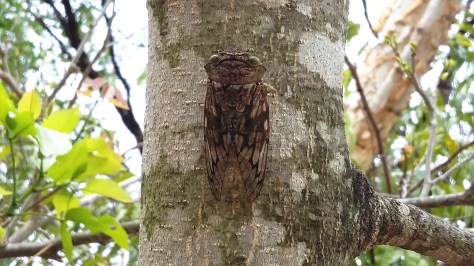
Lesser flameback. I was not birding very efficiently. I was aware of the calls most of the time though. Brahminy starlings, hoopoes, Coppersmith barbets, Magpie robins, Puff-throated babblers (in the mornings), Common ioras, Jungle babblers, Scimitar babblers, Purple sunbirds, Treepies and Indian cuckoos. And the Peacocks.
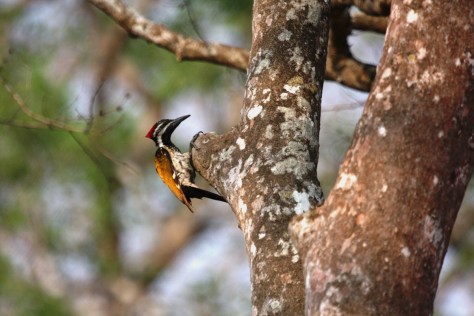
Dancing peacocks occurred frequently. This picture was clicked by 8-year old P.

Crested serpent eagle

Clash of the simians. Horseplay actually.
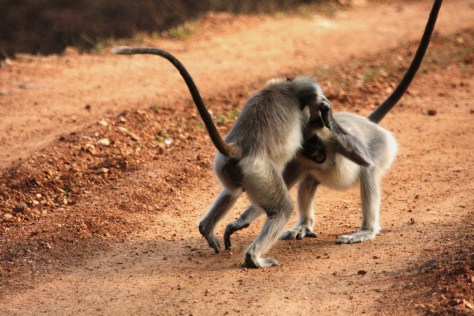
How does an elephant climb a 4-foot high embankment after a good scratch?
Three-month-old calf

We ran into this shy tusker in the evening safari on day 2. He withdrew into the lantana and stood watching us with utter suspicion. We in turn withdrew a short distance to coax him out, but he couldn’t bolster enough courage and we eventually gave up.

While we were driving back to the camp on the evening of day 3, this remarkable tusker appeared, rather suddenly. He walked at a quick-but-steady pace, crossed the highway with scarcely a break in stride or glance at the traffic he caused to suddenly halt, and disappeared in an apparent hurry on the other side. This was one traveling elephant with someplace to go.

We first spotted this leopard ambling on the edge of the lantana right by the highway, causing quite a traffic jam, and completely indifferent to the honking, gawking, screaming crowds. Eventually he cut into the lantana and disappeared. We turned into the forest to intercept him on the other side of the lantana patch. He crossed the track in front of three or four jeeps, quite unafraid. This picture was taken just before the crossing.

We had an interesting experience with this leopard in the evening safari of day 2. The safari was generally dry, except for the encounter with the shy tusker. We had spent a considerable amount of time waiting in vain by Ministerguthi Kolathi for a tigress with a triplet of cubs that were reported to be hidden in the bamboos by the kere. We left reluctantly when there was no more time left. Just before we reached the main road, we found this leopard crouched by the track, staring fixedly into the lantana.
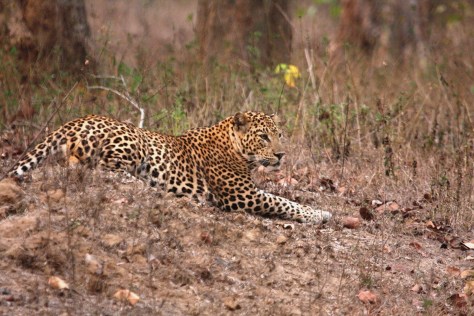
There were deer there, though we couldn’t see them. Except for a casual glance once, the leopard ignored us, even though we were some thirty or forty feet away.
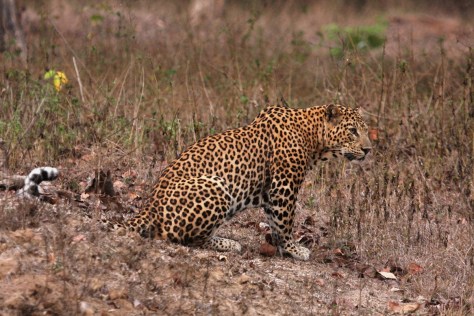
This was a telling lesson in patience. After an interminable wait, the leopard rose ever so slowly, and stalked to the edge of the lantana. Just as he was about to launch into it, he was spotted and in an eruption of alarm calls, the chital scattered. The leopard bounded into the lantana after them and we lost contact with him.
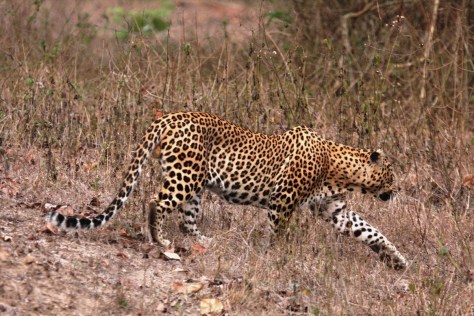
Shortly after driving into the forest on our very first safari, we ran into a batch of langur alarm calls. A leopard was evidently lurking around. However we didn’t wait around as a couple of jeeps were seen clustered around Kolakmalli Katte hardly a hundred meters away. Prince was in attendance, sitting with his rear end submerged. We spent a short while with him until a short drizzle started up, driving him to seek cover. We came back a while later after the rain had stopped to spend some more time with him.

This sparkling encounter happened on the morning of day 3, at Moolapura kere. There was a short burst of alarm calls and then Prince strode down to the water’s edge, turned himself around, and lowered himself rump-first into the water. He stayed that way for ten minutes or so, before rising, scent-marking and then sauntering away down a nullah and out of sight.





Birds
- Ashy drongo
- Asian brown flycatcher
- Asian paradise flycatcher
- Black-hooded oriole (calls)
- Brahminy starling
- Brown shrike
- Changeable hawk eagle
- Common myna
- Coppersmith barbet
- Coucal (calls)
- Crested serpent eagle
- Indian cuckoo (calls)
- Indian treepie
- Lesser flameback
- Green barbet (calls)
- Grey junglefowl
- Hoopoe
- Indian robin
- Jungle babbler
- Jungle myna
- Magpie robin
- Peafowl
- Pied bushchat
- Pied kingfisher
- Plum-headed parakeet
- Puff-throated babbler (calls)
- Purple sunbird (calls)
- Purple-rumped sunbird
- Red vented bulbul
- Red whiskered bulbul
- Rose-ringed parakeet
- Scimitar babbler (calls)
- Spotted dove
- Streak-throated woodpecker
- White-breasted waterhen
- White-browed fantail
- White-throated kingfisher
Mammals
- Barking deer
- Bonnet macaque
- Chital
- Elephant
- Leopard
- Ruddy mongoose
- Sambar
- Stripe-necked mongoose
- Three-striped palm squirrel
- Tiger
- Tufted langur
